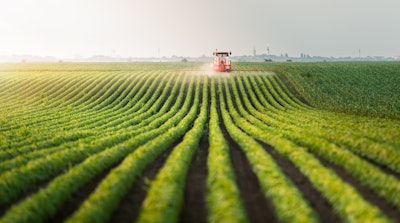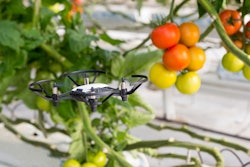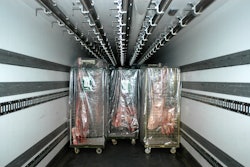
The farmer is one of the most useful people since the beginning of civilization. We all depend upon agriculture to meet food requirements. That’s because the farmer grows crops, carries agricultural activities and accounts for around 1% of the workforce in Great Britain.
Yet, in the last 10 years, almost one person a week has been killed as a direct result of agricultural work in Great Britain, and many more have been seriously injured or made ill by their work.
Good farmers and employers recognize the benefits of reducing incidents and ill health among their workers, are aware of the financial reasons to aim for and maintain good standards of health and safety and regarded as an essential part of farm business management. Unwise risk-taking is an underlying problem in the industry and those working on their own are especially vulnerable.
Managing risks in a sensible way protects you, your family, your workers and your business and can bring the following benefits:
· a reduction in injuries and ill health and the resulting financial and personal costs;
· improved productivity, good morale and a happier, healthier workforce;
· better farming practice to help develop a sustainable farming business;
· the ability to carry out weather-critical operations at the right time;
· reduced sick payments and recruitment/training costs for replacement workers;
· reduced loss of output resulting from experienced and competent workers being off work;
· longer life for equipment and machinery;
· less chance of damage to machinery, buildings and product;
· lower insurance premiums and legal costs;
· less chance of enforcement action and its costs, e.g. the cost of dealing with an incident and/or fines;
· reduced risk of damage to the reputation of the business.
Agricultural work can also be physically demanding and the repetitive nature of the work causes a range of health problems, including severe back pain.
With high numbers and rates of fatal injury, agriculture, forestry and fishing are the riskiest industry sector. Just over one in 100 workers (employees and the self-employed) work in agriculture, but account for about one in five fatal injuries to workers.
The total annual cost of injuries (in farming, forestry and horticulture) to society is estimated at £190 million and around two-thirds of that is due to reportable injuries (£130 million), with fatalities accounting for around another third (£55 million).
The most common causes of death are:
· transport – being struck by moving vehicles;
· being struck by a moving or falling object, e.g. bales, trees etc.;
· falls from height;
· asphyxiation or drowning;
· contact with machinery;
· injury by an animal;
· being trapped by something collapsing or overturning;
· contact with electricity, nearly two-thirds of which involves overhead power lines (OHPLs).
There are many more injuries that do not result in death. Less than half of reportable injuries to workers across all industry sectors are reported each year, but the level for agriculture, forestry and fishing is much lower. Surveys suggest that of those injuries to workers in agriculture (the most serious), only 16% are actually reported. Health and Safety Executive (HSE) estimates that there could be as many as 10,000 unreported injuries in the industry each year. Each one involves costs to the injured person and to the business. People working in the industry can also be permanently disabled by ill health. Breathing in dusts, handling loads, being exposed to noise or vibration, using chemicals and working with animals can all cause ill health, with symptoms that can take years to develop. In some cases, this can result in premature death.
In agriculture:
· About 12,000 people suffered from an illness caused by or made worse by their current or most recent job;
· musculoskeletal injury (back pain, sprains or strains) is over three times the rate for all industries;
· the number of people affected by asthma is twice the national average;
· about 20,000 people are affected by zoonoses (diseases passed from animals to humans) each year.
Workers may be exposed to extreme heat, cold, high humidity and radiation from direct and prolonged exposure to the sun (all of which imposes stress on the worker). They may also be exposed to excessive vibration and noise or may have to work in uncomfortable positions for long periods and handle a wide range of chemicals such as fertilizers or pesticides.
Training and vocational qualifications
The Health and Safety at Work Act 1974 requires employers to provide employees with information, instruction, training and supervision necessary to ensure health and safety at work. The self-employed also have a duty to ensure their own health and safety and that of others who may be affected by their work activities. Appropriate training enables workers to know about the hazards and risks they may face, the precautions to take (including any emergency procedures) and gain experience safely. Training is available from a variety of sources, including:
· Lantra, the sector skills council for the land-based sector
· Trade unions or trade associations
· Colleges of further or higher education
· Private training organizations and training providers
· Independent health and safety consultants
· Employer bodies or representative organizations
· Qualification awarding bodies
· Professional industry schemes
· Local health and safety groups
· Manufacturers, dealers and suppliers
Certainly, in these times, the importance of food supply, food safety and food accessibility is rightfully heightened. With this, let’s extend appreciation to the farmers that help get food on grocery store shelves and to local farmers’ markets.


















